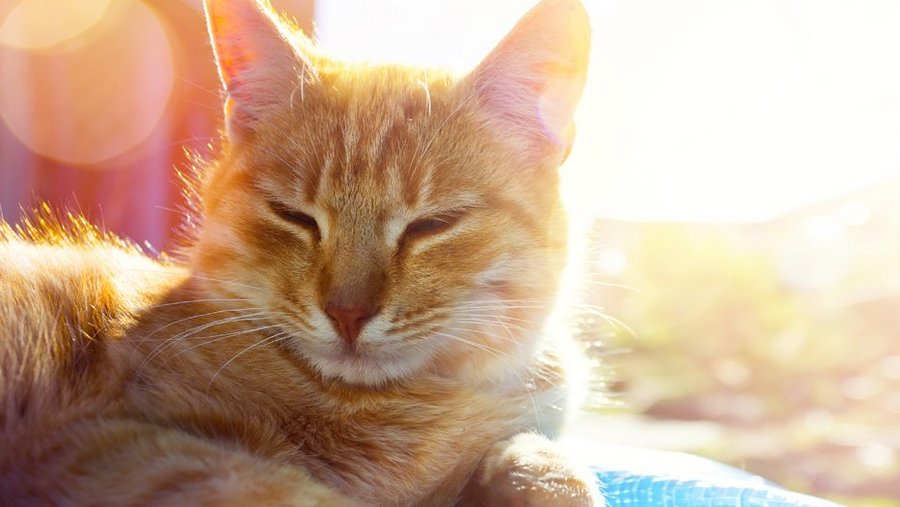Water is known to be a rare commodity in the desert and is not “wasted” through the skin. Even if your cat never gets wet with sweat, it does have sweat glands. For example on the back, the corners of the mouth, the teats, and the paws. However, these glands do not produce visible sweat. Instead, the apocrine glands on the back produce a skin-protecting substance. Eccrine glands at the corners of the mouth, the teats, and especially the paws are used for communication. You’ve probably noticed that your tiger leaves delicate paw prints on smooth surfaces. Other cats then know that someone has already been there. Scratching trees is also a way of communicating because your cat will leave particularly intense scent marks. The glands are therefore not good for sweating but rather for many other things. But how does your feline friend regulate its body temperature?
Adapt your behaviour to the heat.
The first thing your cat should do in the heat is to find a shady spot and take a siesta. It makes itself as long as possible in order to release as much temperature as possible into the cool environment. It shifts its activity phase to the night. If this is not enough, it licks its fur and thus provides evaporative cooling.
Get your cat into summer mode.
Cats also have a number of fascinating bodily functions that can be used to combat the heat – and conversely the cold.
Change of coat
The typical change of coat takes place in spring and autumn. This allows your cat to adapt to the different temperature conditions. In midsummer and during longer periods of heat, it sheds additional fur.
Skin temperature
Cats can actively change their skin temperature. In winter, they lower their skin temperature in order to lose less heat to the environment. In the case of internal heat stress (e.g. after hunting), the skin temperature is increased in order to emit heat radiation. This mechanism also switches on when the cat is exposed to heat from outside – even in summer heat. Or when your cat snuggles up in front of the stove in winter and you wonder how it can stand it.
Miraculous network
In order to protect their brains from overheating, cats have a special anatomical adaptation: the miraculous network technically known as the “rete mirabile”. This is a network of blood vessels in the head area that functions like a heat exchanger. If the brain temperature rises (e.g. because of physical exertion or heat) cool blood is transported from the nasal epithelium to the cerebral arteries in order to dissipate heat. This mechanism also works in the opposite direction. If the brain temperature is low (e.g. because of hypothermia, for example), no heat is dissipated from the brain.
Panting and increased paw sweating.
Cats also pant to combat the heat. But then you should give your feline friend a chance to cool down. The same applies to extreme perspiration via the paws. If your pet leaves clearly visible paw prints on the floor, you must intervene. You can find out how to get your cat through the summer heat here.

